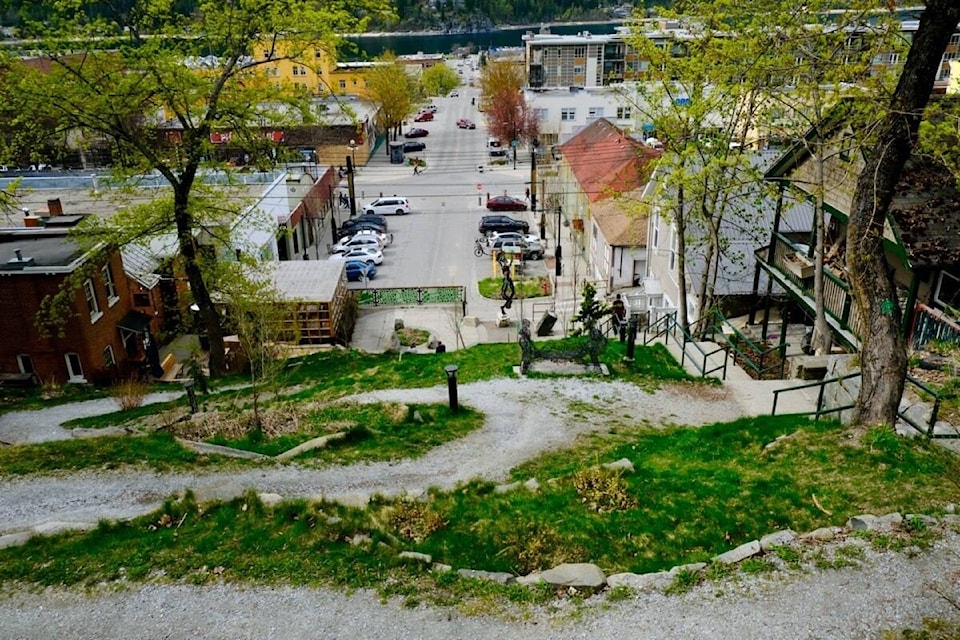by George Chandler
When people look at liveable small cities in B.C., Nelson often makes its way to the top of the list. It’s not surprising, as Nelson has many qualities that appeal to residents and visitors alike. But I wonder if this would be the case if the main criterion were around ample and healthy public space? This is something I don’t think that we have discussed enough as a community.
The term public space is likely more familiar to architects, designers, and planners. When I recently began to explore this topic, I had only a general sense of what public space actually is, and why it’s important to have a coherent approach.
Simply put, public spaces are non-private areas open and accessible to people. It’s helpful to see public space through three broad lenses: open spaces, (parks, trails, beaches, playgrounds, sports fields, and other natural spaces); streets and sidewalks (how we move through the community); and civic buildings (venues the public uses and where it gathers).
Public spaces are created and maintained for citizens, and they are where our social, economic, democratic and cultural lives play out. They are where we affirm our shared rights to the city, and are by definition accessible to all citizens regardless of their income and personal circumstances. In a people-centred city, vibrant public space is considered essential to the health, quality of life, and the freedom of movement and expression in a city.
Charles Montgomery, author of Happy City, writes that a happy, healthy city is a social city where people know and trust their neighbours. Srecko Horvat, philosopher and activist, believes that without public space there is no real democracy. Eric Klinenberg, author of Palaces and the People, tells us that social infrastructure — the places that shape our interactions — either keep us more connected, or separate us if we don’t invest in them.
Why is now a good time to discuss public space? Together, the pandemic and recent intense heat and smothering smoke give us the opportunity to examine more closely how we are living together. We now have a stronger collective sense of what we miss when we can’t easily or safely access public space.
Since Nelson was incorporated as a city 125 years ago, much has changed around how we view and use our city environment. There are many examples of local projects and policies that affect the places where we gather or meet each other. Some have been popular, others not. But they seem often disconnected and not part of a conscious overall vision — or at least not one that has been articulated publicly.
Key questions around public space still remain for us to discuss: What is our community vision for a more liveable, healthier city? What could a more people-centred, sustainable approach to public space look like? What could we learn from other cities, particularly around initiatives that don’t need a lot of time nor money? What does equitable access mean, and how do we ensure this? What kind of input and influence needs to reside in the hands of citizens?
Nelson at its Best, Nelson Public Library and Nelson Civic Theatre are working together to initiate what we hope will be an ongoing community exploration of public space. The first event kicking this off is “Exploring Public Space” on Monday, May 30, 7 p.m. at the Nelson Civic Theatre and on Zoom. We hope to follow this up with small informal neighbourhood or park bench conversations among friends and neighbours. Details on these two initiatives will be coming soon.
Please come and join the start of this community conversation on May 30. There is a bigger role for all of us, far beyond just weighing in on Nelson’s popular reputation.
George Chandler is board chair with Nelson at its Best.
